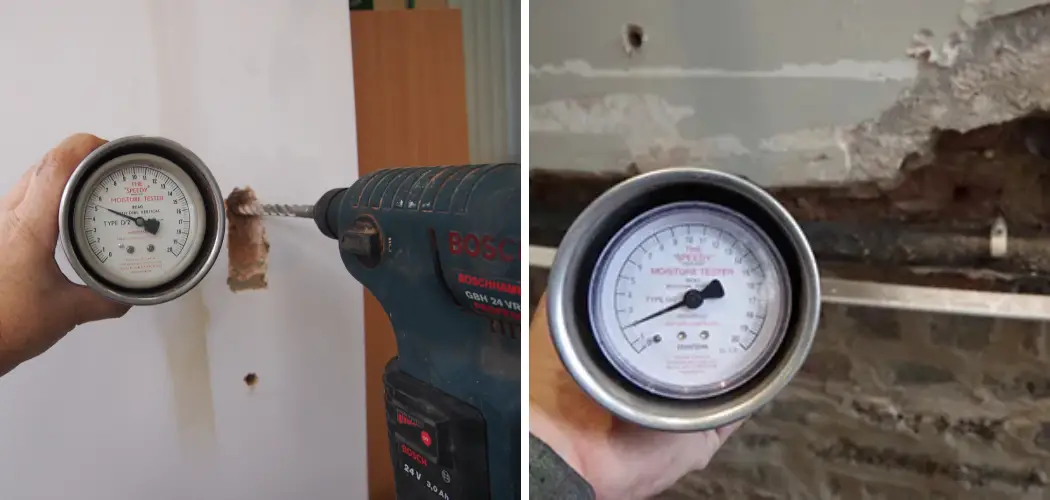Measuring dampness is crucial for identifying and addressing potential moisture issues in your home, which can lead to mold growth, structural damage, and health hazards. Effective dampness measurement involves utilizing various tools and techniques to accurately assess moisture levels in different areas. In this comprehensive guide, we’ll explore effective strategies and practical tips on
how to measure dampness.
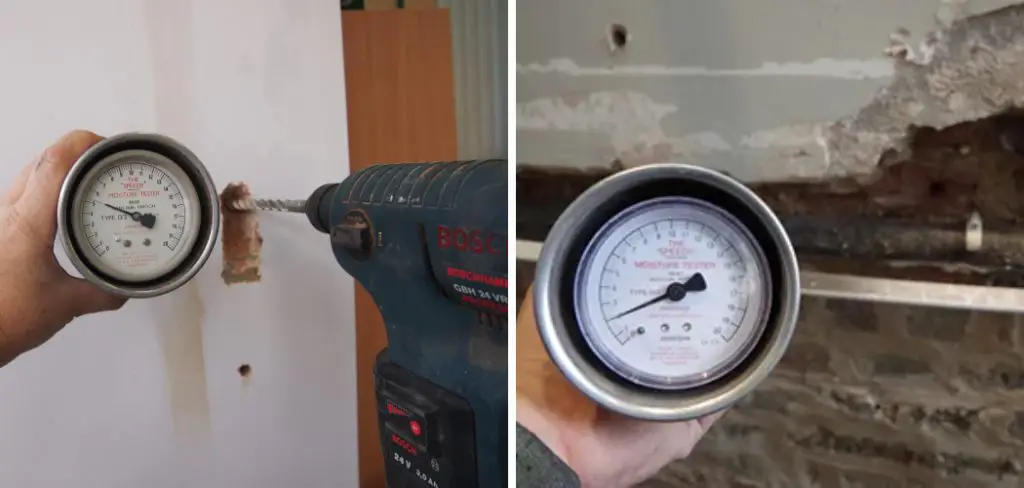
One common method is using a moisture meter, which provides instant readings of moisture content in surfaces like walls, floors, and ceilings. Additionally, visual inspection and observation of signs such as water stains, peeling paint, or musty odors can indicate dampness. Relative humidity meters are also valuable for monitoring moisture levels in the air, especially in humid environments prone to condensation.
Infrared thermography is another advanced technique that detects temperature variations caused by moisture, allowing for non-invasive and comprehensive assessments. By understanding how to measure dampness effectively, homeowners can proactively manage moisture levels, mitigate potential damage, and maintain a healthy indoor environment.
Significance of Measuring Dampness in Homes
Understanding and measuring dampness in homes is vital for several reasons. Firstly, excessive moisture levels can compromise the structural integrity of a building. Persistent dampness can weaken foundations, warp wooden structures, and erode building materials, leading to expensive repairs and potentially jeopardizing the safety of the inhabitants.
Secondly, damp environments are conducive to mold and mildew growth, which not only damage property but also pose significant health risks. Mold spores can trigger allergies, respiratory issues, and other health problems, making it crucial to address moisture problems promptly.
Additionally, dampness can create an uncomfortable living environment, leading to musty odors and cold, clammy conditions. By regularly measuring and managing dampness, homeowners can prevent these issues, ensuring a safe, healthy, and pleasant indoor atmosphere.
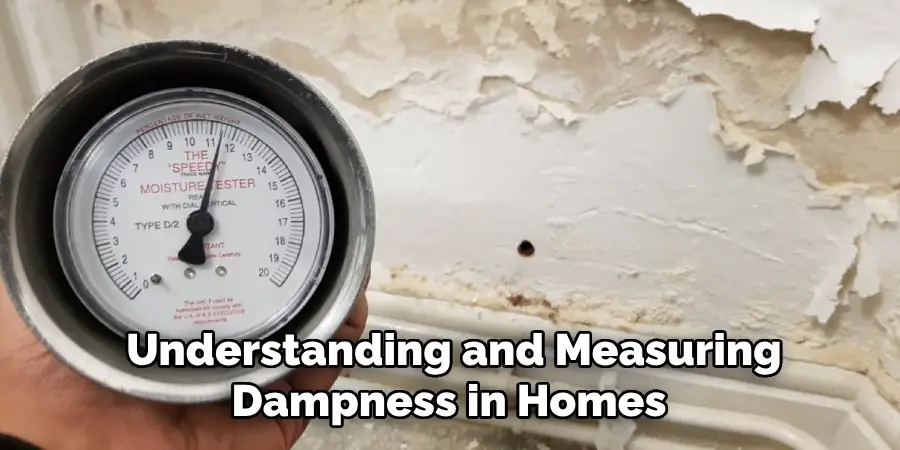
Risks Associated with Excess Moisture and Dampness
Excess moisture and dampness present numerous risks that can affect both the structure of a home and the health of its occupants. Structurally, prolonged exposure to moisture can lead to wood rot, which weakens wooden beams and supports, compromising the integrity of the building. Damp conditions can also accelerate the deterioration of other building materials such as plaster, insulation, and metal components, resulting in significant repair costs.
Health-wise, damp environments are prime breeding grounds for mold and mildew, which release spores into the air. These spores can be inhaled, leading to respiratory issues such as asthma, bronchitis, and other allergic reactions. Individuals with weakened immune systems or preexisting health conditions are particularly vulnerable to these effects. Moreover, certain types of mold produce mycotoxins, which can cause more severe health problems, including neurological symptoms and chronic fatigue.
In addition to structural and health risks, excess moisture can create an uncomfortable and unsightly living environment. Dampness often leads to unpleasant musty odors that permeate the home, making it less inviting. It can also cause peeling paint, blistering wallpaper, and stained surfaces, diminishing the aesthetic appeal of your living space. By understanding these risks, homeowners can better appreciate the importance of regularly monitoring and managing moisture levels in their homes.
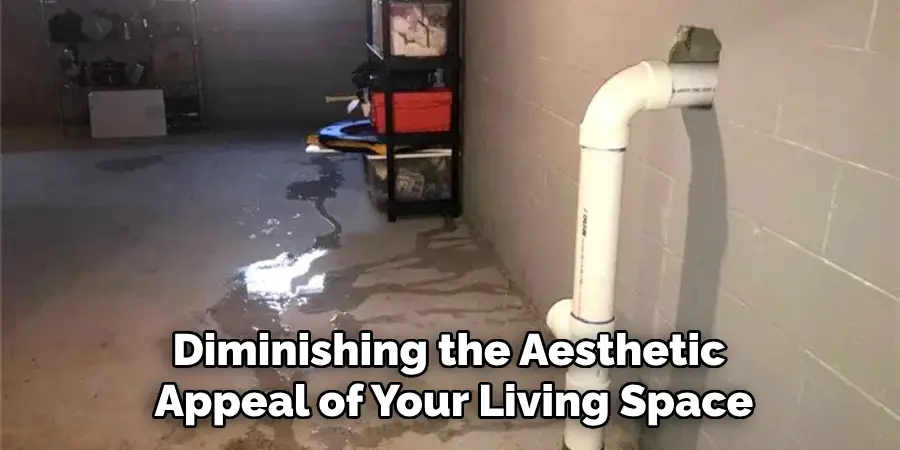
Understanding Dampness and Its Causes
Dampness, or the presence of unwanted moisture within a building, can arise from several sources and through various mechanisms. One primary cause is condensation, which occurs when warm, moisture-laden air encounters a cooler surface, causing the water vapor to condense into liquid form. This is particularly common in areas with poor ventilation, such as bathrooms and kitchens, where high humidity levels prevail.
Another common source of dampness is water ingress, where external water penetrates the building envelope due to factors like defective roofing, damaged gutters, or poorly fitted windows and doors. This type of dampness is often exacerbated during periods of heavy rainfall or when buildings are located in areas prone to flooding.
Rising damp is a more insidious form of moisture penetration, typically occurring in older buildings without adequate damp-proof courses. It happens when moisture from the ground rises up through the porous materials of a building’s foundation walls by capillary action. This can lead to widespread damage if not properly addressed.
Leaks from plumbing can also contribute significantly to indoor dampness. Burst pipes, faulty seals, or unnoticed leaks from appliances like dishwashers or washing machines can introduce a steady stream of water into a home, leading to localized damp spots that can spread and cause more severe issues.
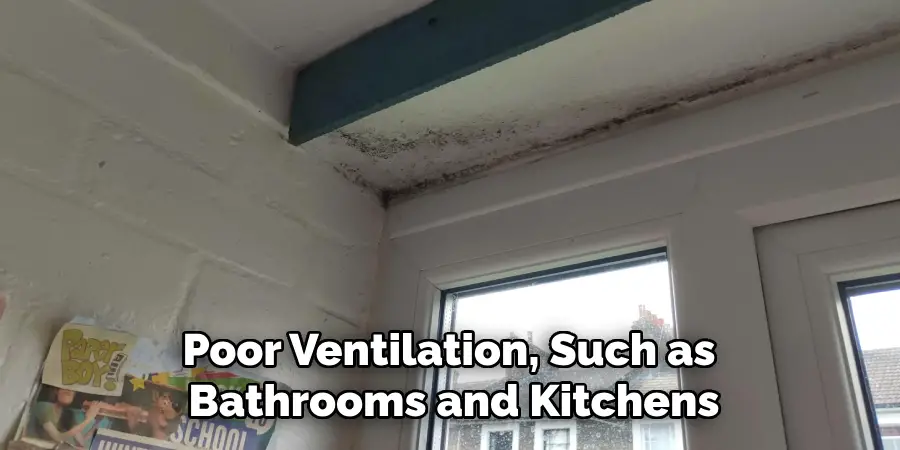
Poor construction practices and the use of inappropriate building materials can further exacerbate dampness problems. Understanding the myriad causes of dampness is crucial for accurately diagnosing the source and implementing effective remedial measures to protect the structural integrity and health environment of your home.
Common Sources of Moisture and Dampness in Homes
Moisture and dampness in homes can originate from a variety of sources, each contributing to different types of damp issues. Understanding these common sources is essential for effective moisture management and prevention strategies.
Condensation
Condensation is a widespread cause of dampness, particularly in homes with inadequate ventilation. It occurs when warm, humid air cools and releases moisture upon contact with cold surfaces, such as windows, walls, and ceilings. Kitchens and bathrooms are especially prone to condensation due to regular activities like cooking and bathing, which generate significant levels of moisture.
Water Ingress
Water ingress happens when external water penetrates the building’s envelope. This can be caused by several factors, including faulty rooftops, cracked walls, and damaged drainage systems. Poorly sealed windows and doors can also allow rainwater to seep inside, especially during storms or heavy rainfall. Buildings located in regions susceptible to flooding are at an increased risk of water ingress.
Rising Damp
Rising damp is a common issue in older buildings that lack a proper damp-proof course. This phenomenon occurs when moisture from the ground ascends through the masonry via capillary action. It can cause significant damage to walls, flooring, and even furniture if not adequately treated, leading to an ongoing cycle of dampness and decay.
Plumbing Leaks
Indoor plumbing leaks are another frequent source of dampness. Leaking pipes, dripping taps, and malfunctioning appliances like washing machines or water heaters can lead to moisture accumulation over time. Even a small leak can cause extensive damage if left unchecked, creating pockets of dampness that may encourage mold growth.
Poor Construction
Substandard construction practices and the use of unsuitable building materials can exacerbate dampness problems. Inadequately installed insulation, improper sealing, and the use of materials that are prone to absorbing moisture can all contribute to damp conditions within a home. Ensuring that construction meets high standards and uses appropriate materials is crucial in preventing moisture issues.
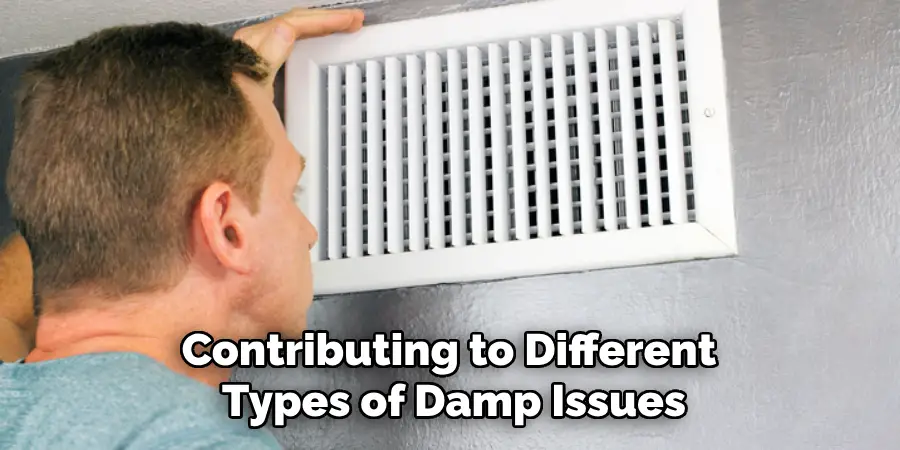
External Factors
Environmental factors also play a role in indoor moisture levels. Homes in coastal areas are exposed to high humidity and salt-laden air, which can accelerate corrosion and damp problems. Seasonal changes, with varying temperatures and humidity levels, can also impact the moisture balance in a home.
Impact of Dampness on Health and Property
The presence of dampness in a home can have far-reaching consequences on both health and property. For residents, prolonged exposure to a damp environment can lead to an array of health issues. Mold and mildew, which thrive in moist conditions, are common allergens that can trigger respiratory problems, such as asthma attacks, and exacerbate conditions like bronchitis. People with compromised immune systems, the elderly, and young children are particularly susceptible to the health hazards posed by dampness and mold.
Beyond health concerns, dampness can significantly undermine the structural integrity of a property. Persistent moisture can weaken timber structures, causing wood rot and leading to the deterioration of floors, walls, and ceilings. Metal components, such as nails and beams, are prone to rust and corrosion when exposed to damp conditions, potentially compromising the stability of the building.
Dampness can also reduce the thermal efficiency of a home, as wet insulation materials lose their effectiveness. This not only leads to increased energy bills but also creates an uncomfortable living environment. Additionally, the aesthetic damage caused by dampness should not be underestimated. Peeling paint, blistering wallpaper, and unsightly stains can detract from a property’s appearance, potentially lowering its market value.
In summary, addressing dampness is crucial for maintaining both the health of a home’s occupants and the durability of the structure itself. Understanding the various impacts highlights the importance of proactive moisture management and timely interventions to safeguard both human and property well-being.
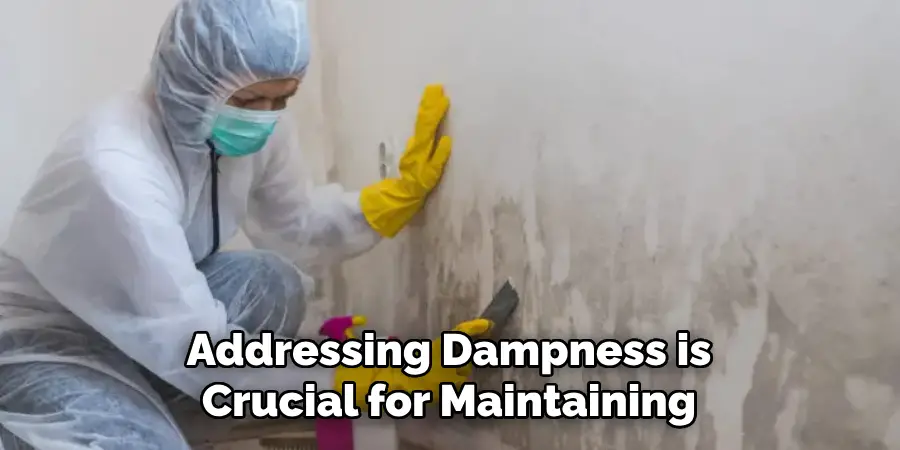
10 Methods How to Measure Dampness
1. Visual Inspection:
Begin your assessment by conducting a thorough visual inspection of the area suspected to be affected by dampness. Look for visible signs such as water stains, discoloration on walls or ceilings, peeling paint or wallpaper, and the presence of mold or mildew. Pay close attention to corners, around windows and doors, and areas where plumbing or drainage systems are located. Document any findings meticulously to aid in further analysis.
2. Moisture Meters:
Utilize moisture meters to quantitatively measure the moisture content of various surfaces. These devices can provide precise readings, indicating the percentage of moisture present in materials such as wood, drywall, plaster, and concrete. Ensure proper calibration of the moisture meter according to the material being tested to obtain accurate results. Repeat measurements at different locations to establish a comprehensive understanding of moisture distribution.
3. Hygrometers:
Employ hygrometers to measure the relative humidity levels within the environment. These instruments help gauge the moisture content in the air, which can contribute to dampness and mold growth. Place hygrometers in different rooms and areas to assess variations in humidity levels. Monitor changes over time, especially in spaces prone to condensation or poor ventilation, to identify potential dampness issues.
4. Infrared Thermography:
Harness the power of infrared thermography to detect hidden moisture and thermal irregularities within building structures. Infrared cameras detect temperature variations caused by moisture accumulation, leaks, or insulation deficiencies. Conduct scans of walls, ceilings, and floors to pinpoint areas of concern. Interpret the thermal images carefully, correlating temperature anomalies with potential sources of dampness for targeted remediation efforts.
5. Surface Temperature Measurement:
Utilize surface temperature measurement devices to identify cold spots and areas of condensation buildup. Temperature differentials between surfaces can indicate underlying moisture problems, as cooler temperatures often coincide with higher moisture levels. Focus on areas prone to poor insulation, such as exterior walls or uninsulated pipes, to identify potential sources of dampness. Record temperature readings systematically for comparative analysis.
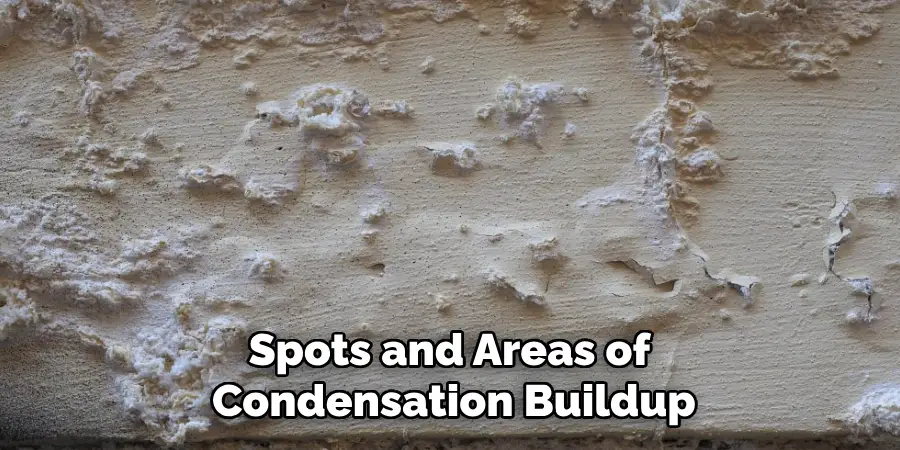
6. Probe Testing:
Implement probe testing methods to assess moisture levels beneath surface materials or within structural components. Insert moisture probes or sensors into walls, floors, or other affected areas to obtain direct measurements of moisture content. This approach allows for in-depth evaluation of moisture infiltration and damage extent, facilitating targeted remediation strategies. Exercise caution to avoid causing further damage during probe insertion.
7. Condensation Checks:
Conduct condensation checks in areas susceptible to moisture buildup, such as kitchens, bathrooms, and basements. Inspect windows, mirrors, and plumbing fixtures for signs of condensation accumulation, indicating elevated humidity levels. Use moisture-absorbing materials like hygroscopic salts or silica gel to assess moisture levels in confined spaces. Monitor condensation patterns regularly to identify trends and mitigate potential dampness issues.
8. Building Materials Analysis:
Perform analysis of building materials to assess their susceptibility to moisture absorption and retention. Evaluate the composition and porosity of materials such as concrete, brick, wood, and insulation to determine their moisture resistance properties. Conduct laboratory tests or consult material specifications to ascertain moisture absorption rates and permeability characteristics. Select moisture-resistant materials for construction and renovation projects to mitigate dampness risks.
9. Airflow and Ventilation Assessment:
Evaluate airflow patterns and ventilation systems to optimize indoor air quality and reduce moisture buildup. Inspect HVAC systems, exhaust fans, and air vents to ensure proper operation and adequate ventilation rates. Measure air exchange rates and airflow velocities in different rooms to assess ventilation effectiveness. Implement strategies such as air sealing, mechanical ventilation, and natural ventilation techniques to control humidity levels and minimize dampness.
10. Historical Data Analysis:
Review historical data and building records to identify past instances of dampness or moisture-related issues. Examine maintenance logs, repair records, and previous inspection reports for insights into recurring problems or unresolved issues. Analyze climate data and weather patterns to correlate external environmental factors with indoor moisture levels. Use this information to develop preventive maintenance plans and anticipate potential dampness challenges in the future.
Things to Consider When Addressing Dampness Issues
Source Identification:
Pinpointing the exact source of moisture is crucial for effective remediation. Common sources include leaks in roofing, plumbing, or windows, as well as poor drainage around the foundation. By accurately identifying the origin of the dampness, appropriate corrective measures can be implemented to prevent recurrence.
Severity and Scope:
Assess the extent of the dampness problem to determine the necessary level of intervention. This involves evaluating both the surface and sub-surface impacts, including structural damage, mold growth, and potential health risks. A minor condensation issue requires different handling compared to extensive water infiltration affecting a building’s integrity.
Health Implications:
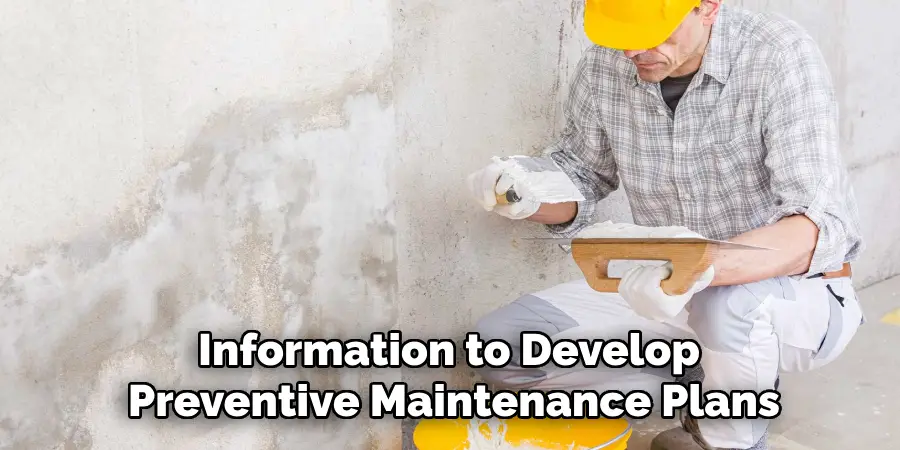
Consider the potential health risks associated with dampness and mold exposure. Certain molds can release spores that pose respiratory hazards, particularly for individuals with allergies, asthma, or weakened immune systems. Ensuring a safe living or working environment is paramount during the remediation process.
Material Selection:
When addressing dampness, choose materials that are moisture-resistant and durable. Opt for products with low permeability and high resistance to mold and rot, such as treated wood, vapor barriers, and water-resistant insulation. This consideration is vital for both new construction and renovation projects to enhance the longevity of the repairs.
Ventilation Improvement:
Enhancing ventilation is a key strategy to mitigate dampness. Assess the current airflow and identify areas with poor ventilation. Implement solutions such as mechanical ventilation systems, expanded window openings, or the use of dehumidifiers to maintain optimal humidity levels and reduce moisture buildup.
Cost Implications:
Budgeting for dampness repair can range from minor fixes to significant renovation expenses. Obtain multiple quotes from reputable contractors and consider the long-term savings of preventing future damage. Balancing cost with thoroughness ensures that both immediate and future dampness challenges are effectively managed.
Professional Assistance:
In cases of extensive or persistent dampness issues, seeking professional expertise is advisable. Certified dampness and mold remediation specialists can offer advanced diagnostic tools, targeted treatment plans, and ongoing monitoring to ensure the problem is fully resolved.
Conclusion
Effectively managing dampness requires a comprehensive approach, integrating visual inspections, advanced measurement tools, and historical data analysis. By employing these strategies, property owners and managers can identify and address moisture issues proactively, thereby preventing structural damage, health hazards, and financial losses.
Ensuring proper ventilation, selecting moisture-resistant building materials, and conducting regular maintenance can significantly mitigate the risks associated with dampness. A proactive stance towards moisture management not only preserves the integrity of buildings but also enhances the well-being of their occupants, fostering a healthier, safer living environment. Thanks for reading, and we hope this has given you some inspiration on how to measure dampness!

